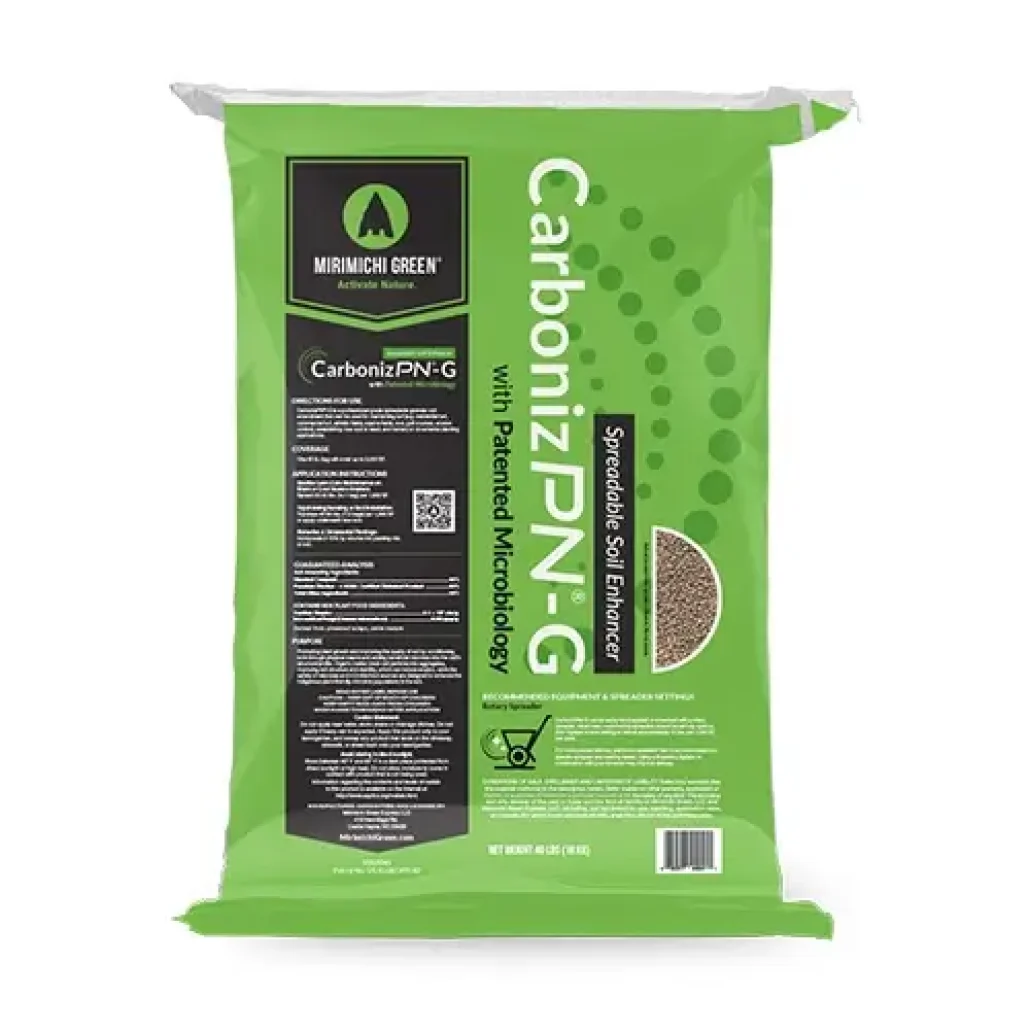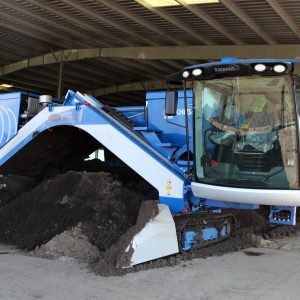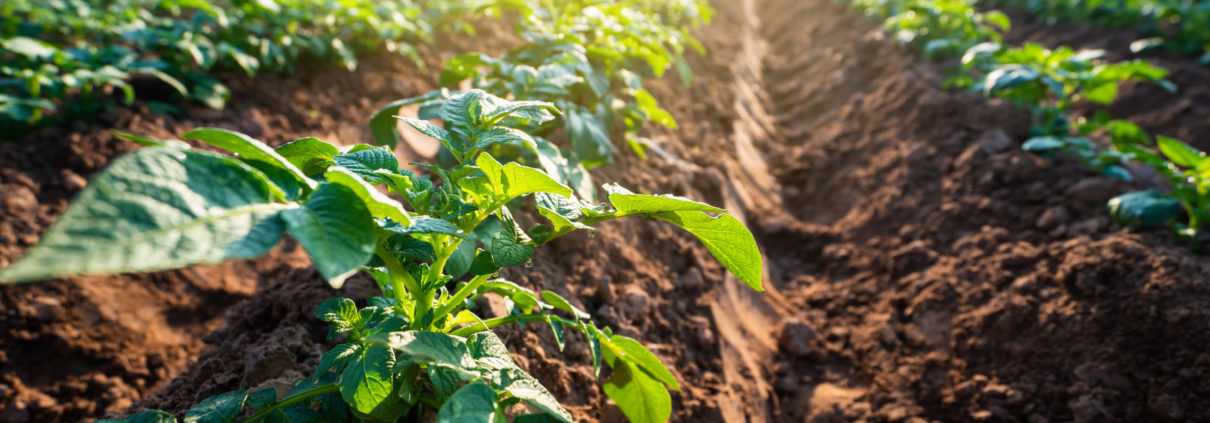
Home > Mirimichi Green Learning Center > Blog
Mirimichi Green Blog
Gather ideas and inspiration for growing your dream landscape. Get the latest tips, be updated on Mirimichi Green affairs, and learn more about our products here in Mirimichi Green Blog!
Ecolawn Applicator: A conversation with Daniel Coté
Superintendent Shannon Easter Shares Project Overview at Broken Sound Club Using Mirimichi Green
When to use a soil amendment versus fertilizer?
Mirimichi Green Launches Organic Granular Fertilizer 4-4-4
Peat Alternative During Shortage And Beyond
Lawn Winterization: Tips for Healthier, Greener Turf Next Spring
3 Alternatives to Roundup for the Landscape Professional
New Mirimichi Green Packaging
COVID-19 Status
Mirimichi Green Invests In New Manufacturing Equipment
Mirimichi Green Introduces Soluble Microbial Powder Into Product Offering
Mirimichi Green Sales Team Expands To The West Coast
Mirimichi Green Sales Personnel Expands
Mirimichi Green Announces Carbon In All Liquid Products
Mirimichi Green Adds New Hires To Team
Get Rid Of Bugs With Mirimichi Green Pest Control
Spring Tips For Sod And Topdressing Applications
US Equestrian Federation Announces Mirimichi Green as an Official Sponsor
Golf Course Industry – Injecting Different Theories
Mirimichi Green Introduces Pest Control Product
How To Keep A Christmas Tree Fresh And Green
Urban Sustainability Is Growing
Simple Steps to Control Erosion On Project Sites
High Nitrogen Poses Risk To Environment
Successful Turf Management and Disease Control Methods
Launch of CarbonizPN DJ Fine Grade
Help Customers Avoid Soil Erosion and Runoff
Fall Is The Best Time To Improve The Soil
Post-Hurricane Harvey Insecticide Aerial Spray
Mirimichi Green Receives NCMEP Leadership Award
Top 8 Plants That Repel Bugs and Mosquitoes
Top 6 Ornamentals To Include In Fall Landscapes
Shannon Easter To Speak At 2017 Distinguished Ideas Summit
6 Factors To Keep In Mind About Artificial Turf Fields
The Top Problems And Solutions For Soil Compaction
Dog Spots Destroying Your Grass? Here’s What to Do.
How to make the best choice between sod, seed or hydroseed
New Reviews About Outstanding Turf At TIEC
How to Choose the Right Soil for You
The Top 6 Most Common Landscaping Mistakes
The Top 8 Myths About Gardening
Growing Plants That Will Help Attract Wildlife To Your Garden
How To Help Your Plants Fight The Stresses of Summer
5 Ways To Minimize Your Weed Growth
You Need To Know The Importance Of Organic Soil Matter
Top 10 Beautiful, Sustainable, and Eco-Friendly Landscapes
How To Know When To Aerate Your Lawn
5 Proven Ways to Save Water in Your Garden
Transforming Your Landscape to be Healthy and Sustainable
Mirimichi Green Announces Inaugural Sustainable Program Member Award
Singapore Open 2017 Guest Speaker
Mirimichi Green Tackles College Stadium
Mirimichi Green Goes International
Mirimichi Green Launches New Product
Mirimichi Green Personnel Expands
Mirimichi Green Makes Donation To The City of North Las Vegas
Mirimichi Green Saving Lawns in California.
Mirimichi goes to Congress
Mirimichi Green joins in the action at Tree Planting in Louisville KY
When to use a soil amendment versus fertilizer?
In the battle of soil amendments v. fertilizers, it’s important to note that these products serve different purposes in gardening and agriculture. The decision to use a soil amendment or a fertilizer depends on the specific needs and conditions of your soil and plants. Here’s a general guideline:
Soil Amendments
Soil Amendments: Soil amendments are substances added to improve the physical properties of the soil, such as its structure, drainage, water-holding capacity, and nutrient availability. They are usually used to enhance soil fertility in the long term and provide a favorable environment for plant growth. Common soil amendments include:
– Compost: Adds organic matter, improves soil structure, and enhances nutrient retention.
– Peat moss: Improves water-holding capacity and aeration in sandy soils.
– Vermiculite or perlite: Enhances soil drainage and aeration.
– Gypsum: Helps improve soil structure in heavy clay soils.
Soil amendments are particularly beneficial when dealing with poor-quality or degraded soils, as they gradually improve soil health and fertility over time.
Fertilizers
Fertilizers: Fertilizers are substances containing essential plant nutrients that are added to the soil to provide immediate nutrition to plants. They are used to address specific nutrient deficiencies and promote healthy plant growth. Fertilizers come in different formulations, such as granular, liquid, or slow-release, and provide concentrated doses of specific nutrients, such as nitrogen (N), phosphorus (P), and potassium (K), as well as micronutrients.
Fertilizers are typically used when plants exhibit signs of nutrient deficiencies, such as yellowing leaves or stunted growth. They are also useful during periods of rapid growth or high nutrient demand, such as flowering or fruiting stages. Fertilizers provide quick results, but excessive or improper use can lead to nutrient imbalances, environmental pollution, or damage to plants.
In summary, use soil amendments when you want to improve overall soil quality and long-term fertility, while fertilizers are suitable for addressing immediate nutrient deficiencies or promoting vigorous growth during specific plant stages. It’s essential to assess your soil’s condition, perform soil tests to identify deficiencies, and consider the specific needs of your plants before deciding whether to use a soil amendment or a fertilizer.
Learn More about Soil Health
To learn more, check out our webinars on Soil Health or see Soil Amendments and Fertilizers for product information.
Mirimichi Green Launches Organic Granular Fertilizer 4-4-4
03/01/2023 – Castle Hayne, NC – Mirimichi Green has expanded its granular product line with a new, organic granular fertilizer with biology called 4-4-4 Organic Granular Fertilizer. The 4-4-4 Organic Granular Fertilizer is OMRI Listed and contains all organic ingredients and beneficial soil biology. Previously, Mirimichi Green only supplied liquid fertilizers.
Mirimichi Green is constantly researching and testing new ingredients to bring customers the best and most effective products on the market. Keeping sustainability and soil health at the forefront of every product developed, Mirimichi Green brought forth a completely organic fertilizer that can be used on any soil type and landscape. From turf to vegetable gardens, the 4-4-4 Organic Granular Fertilizer gets nitrogen, phosphorus, potassium, iron, calcium, and a wide range of beneficial microbes into the soil for plants to easily digest. By removing consistent synthetic fertilizer feedings, the plant finds what it needs in the soil and consumes the easily digestible organic fertilizer nutrients.
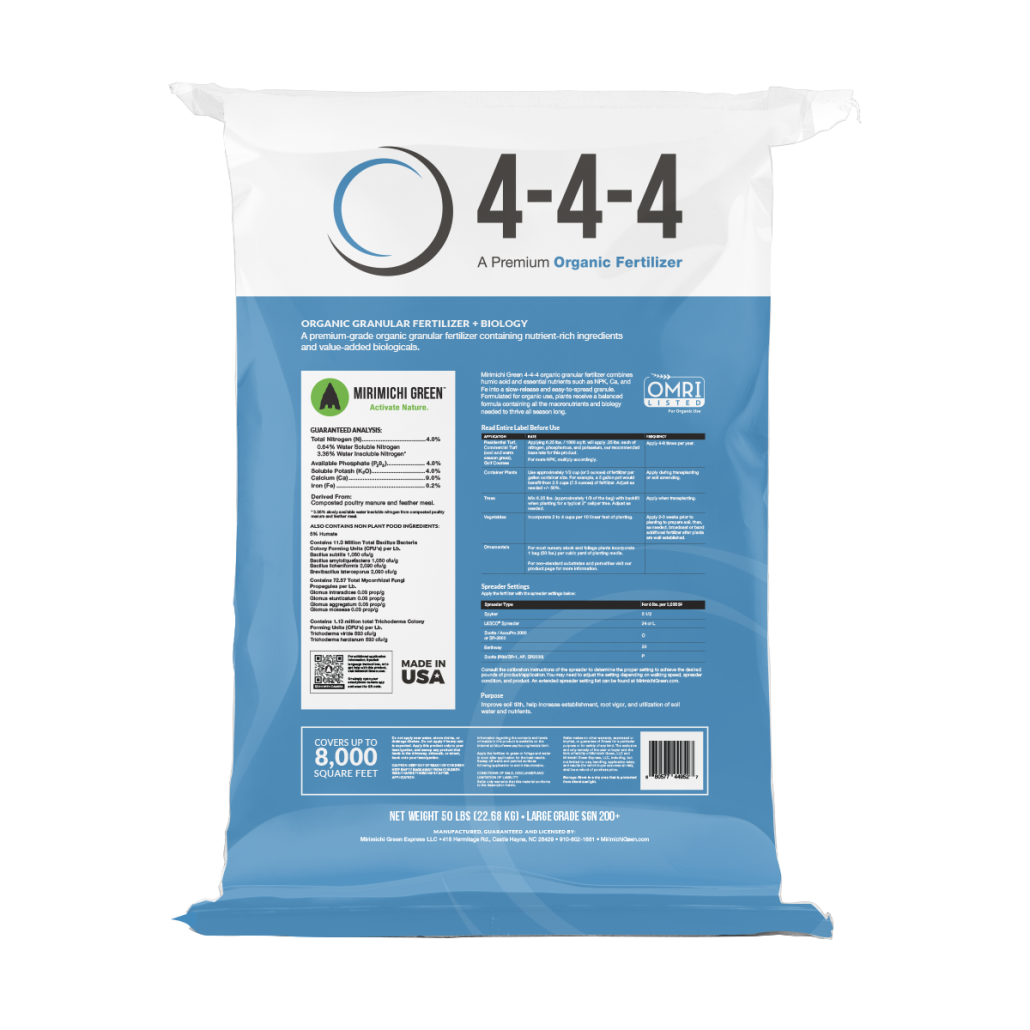
It is ideal for any landscape or planting application seeking a safe, sustainable, and organic option. The 4-4-4 Organic Granular Fertilizer can be used for all residential and commercial turf establishments, container plants, vegetables/gardens, ornamentals, and trees. Some of the benefits include:
- OMRI Listed
- Increases germination
- Enhances plant vigor
- Provides fast green-up and recovery
- Increases nutrient uptake (CEC)
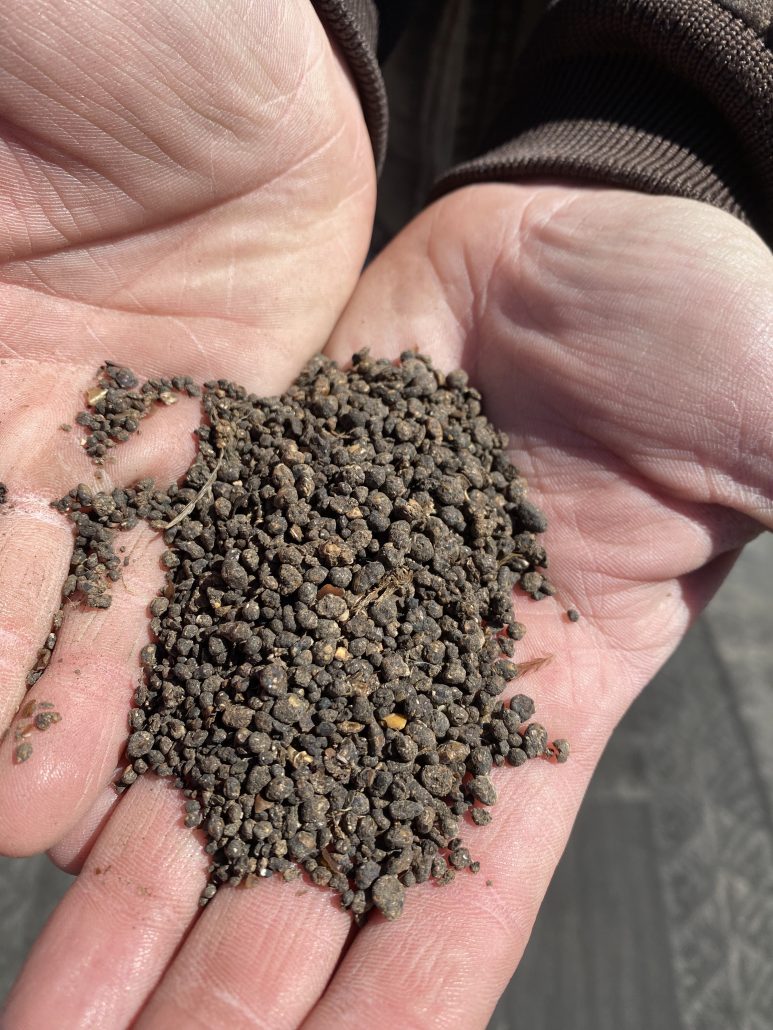
The organic fertilizer’s consistency is ideal for spreading in any standard push-behind spreader or by hand depending on the application. The prill size is similar to a synthetic fertilizer and goes out easily with no agitator or additional equipment needed.
More information about Mirimichi Green’s 4-4-4 Organic Granular Fertilizer such as application rates can be found here.
To order online, click here.
Peat Alternative During Shortage And Beyond
In 2020 and 2021, the beginning of the supply chain issues and product shortages began and the extreme shortages of peat moss have continued into 2022. Most suppliers are already out of peat moss for the year and do not expect inventory until another harvest during the mid-summer at the earliest and even that supply will be limited. The shortage has also caused the price of available inventory to skyrocket. To help complete the projects that require a peat application, finding a competitive and effective alternative is key.
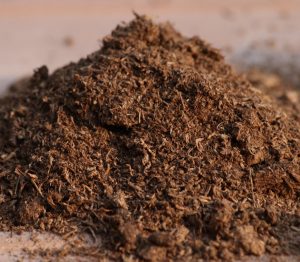
Peat is used in root zone construction mixes, gardening, planting mixes, and blanketing new seeds. But is peat truly serving a purpose other than being a filler for soil mixes or keeping seeds secure from rain, wind, or other environmental factors? No, peat has little to no nutrients to offer and is not eco-friendly.
Don’t Take Carbon, Add Carbon
Groups such as the International Peat Society says the mining of peat moss is a culprit for depleting valuable carbon from the soil and releasing massive amounts of carbon dioxide back into the atmosphere. However, the argument that peat moss is a renewable resource falls flat because the growth rate is extremely slow and it can never replenish itself at the speed and quantity it is being harvested.
Luckily, there are more sustainable, effective, locally sourced replacements readily available to amend soils and blanket seed.

Mirimichi Green provides 2 products that outperform peat and are sustainable; CarbonizPN Soil Enhancer and Mirimichi Green Peat Alternative.
CarbonizPN® Soil Enhancer, known for being one of the best professional-grade soil amendments on the market, is the ideal option for those seeking an alternative to peat. CarbonizPN Soil Enhancer with CarboMatrix Technology™ is composed of activated carbon (inoculated biochar) and premium compost that reduces compaction, drives root growth, increases fertility and water absorption, and improves the structure of the soil.
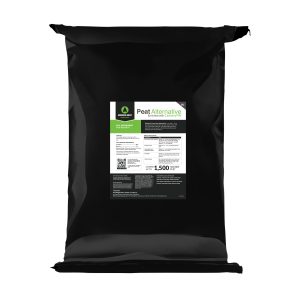
Mirimichi Green Peat Alternative is a sustainable compost created to be a better option and replace peat during the shortage and beyond. It is enriched with CarbonizPN Soil Enhancer as well as peanut husks and shells. Plus, all inputs are sourced in the USA from renewable and readily available materials. Mirimichi Green Peat Alternative will protect new seeds from natural erosion and accelerate germination. The compost and biochar combination adds body to all soil types giving the roots room to easily develop.
Not only does the high-quality compost and biochar in CarbonizPN and Mirimichi Green Peat Alternative increase germination and root growth, but it is all domestically sourced and reduces and solves several environmental issues.

Less Product, Less Money, Less Labor, Less Time Per Application
Unlike peat, a little bit goes a long way with Mirimichi Green Peat Alternative and CarbonizPN. Typically peat spot seeding applications recommend using a 2-inch layer for the seed, but these alternatives don’t require that much coverage to be effective; a light layer is plenty to give the new seeds and soil biology the nutrients for quick germination and deep root growth. Each application will require less product, saving you time and money on each application.
To easily compare attributes of standard peat, Mirimichi Green Alternative, and CarbonizPN, view the table below:
| Standard Peat | MG Peat Alternative | CarbonizPN | |
| Coverage in sq. ft. per bag | 700-1,000 sq. ft. | 1,500 sq. ft. | 2,000 sq. ft. |
| Price | $ | $ | $$ |
| Reduces Compaction | Yes | Yes | Yes |
| Increases CEC | Yes | Yes | Yes |
| Retains Water | Yes | Yes | Yes |
| Promotes Drainage | Yes | Yes | Yes |
| Impact to pH | Acidic | Neutral | Neutral |
| Light Weight | Yes | Yes | No |
| Nutrient-rich | No | Somewhat | Yes |
| Produced Domestically | No | Yes | Yes |
| Environmentally Sustainable | No | Yes | Yes |
| Renewable Resource | No | Yes | Yes |
| Readily Available | No | Yes | Yes |
References:
Lawn Winterization: Tips for Healthier, Greener Turf Next Spring
Thanks to Ron Henry at GolfCourseLawn for featuring Essential-G in his latest video on Winterization. Check out his video below. He covers the reasons why you might want to consider a late-season application of a soil amendment like those from Mirimichi Green.
As Ron mentioned, late fall and early winter are the perfect times to focus your efforts on:
- Resupplying the organic content the soil has been using
- Helping the soil conserve beneficial nutrients
- Developing healthier soil that resists erosion
- Avoiding soil compaction
One thing Ron didn’t address in his Georgia-based video, is the salt runoff mitigation benefits a winterization program can offer in colder climates.
So for homeowners itching to be out in the yard or garden again, a winterization treatment can be a great excuse to get out there. One that can pay dividends in spring with quicker greenup for less effort.
For landscape professionals, winterization is an opportunity to sell an additional application during the slow season that makes things easier on their crews come springtime.
3 Alternatives to Roundup for the Landscape Professional
With reports on the rise of Roundup’s links to cancer, more and more of your customers are asking you about alternatives. Whatever their reasons for asking, it’s your job as a landscape professional to locate solid options to meet their needs.
However, it’s important to note that when your clients ask you to find a Roundup alternative, what they’re really asking for is an alternative to products that use glyphosates. If you already know about the history and controversies surrounding glyphosates, go ahead and skip down to our suggestions at the end.
But if you need a bit of background or a quick refresher, let’s begin with a bit about what glyphosates are and why they’re so controversial. Then we’ll cover a few alternative products, what they’re using and why that’s beneficial in different settings.
Background on Glyphosates
Glyphosate is the chemical name for the main ingredient in the world’s best-selling herbicide, Roundup. But it didn’t start there. The compound was first patented in 1961 as a descaling agent used to clean out mineral build-ups in pipes and boilers.
In 1970, Monsanto scientist John Franz realized it could also be used to kill weeds. Monsanto registered the product under the trade name Roundup in 1974 (1). Widespread adoption of Roundup was so prevalent, that the name became the generic term for any weed-killing compound.
The patent protection for Monsanto ended in 2000, opening the doors for other companies to market the chemical in their own unique formulas. Today, there are currently over 750 products containing some amount of glyphosate for sale in the US (2). But Roundup is still the name most associated with glyphosates. With more than 300 million pounds of Roundup products being used every year in the US, it is the most used agricultural chemical in the country (3).
The Controversy
If you’ve worked for any amount of time in landscaping, you have no doubt faced debates surrounding Roundup, Glyphosates, and Monsanto.
Advocates point to the EPA’s findings that “there are no risks of concern to human health when glyphosate is used in accordance with its current label.”(4). In addition, fans of the compound say that it has been used widely for more than 40 years and is much safer than DDT, atrazine, or paraquat.
Detractors say glyphosates are linked to an increased risk of contracting Non-Hodgkin’s Lymphoma (5). The World Health Organization released a study in 2015 stating that glyphosate is “probably carcinogenic to humans.”(6). Other studies suggest that glyphosate may be harmful to aquatic life if it finds its way to streams or waterways.
Another worry is not so much about glyphosate itself but the additional inert ingredients being used alongside it. These inert ingredients are added for various reasons, including improving the handling of the products, making it easier to mix, or aiding the movement of the active ingredients into the plant tissue (1). Because each company has its own unique formula, it’s hard to know and measure how these proprietary compounds act together. Also, ratios of glyphosate in these different products vary widely, with some formulas containing as little as 1% and others as much as 54% glyphosate.
The Alternatives
Regardless of any personal beliefs about the debate, your client asked you to identify effective alternatives to glyphosate weed killers. What are your options? What are other professionals choosing?
The good news is that there’s currently no shortage of solid alternatives. If the client doesn’t want glyphosate, other herbicide products are available that are even great at managing glyphosate-resistant weeds. Or maybe your client is looking to go fully organic and likes as natural a solution as possible. There’s something for them as well.
Roundup was a potent solution that seemed to work for all weeds. After all, it was developed to strip harsh metallic compounds out of pipes, so it should handle a weed. However, modern alternatives are a bit more precise in their application.
It’s best to choose a product that meets the specific needs of your problem rather than buying a name.
Cheetah Pro
Cheetah Pro’s active ingredient, Glufosinate, inhibits the plant from releasing ammonia (7). The ammonia builds up inside the plant, destroys its cells, and stops photosynthesis. Cheetah Pro is often chosen to manage glyphosate-resistant weeds and to help suppress dormant winter annual weeds such as bluegrass.
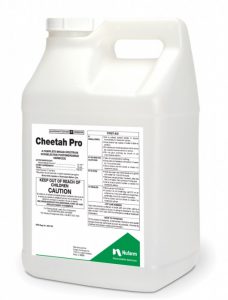
Cheetah Pro at a Glance:
- Price – $105 a gallon, $6.50 a cup, $0.82 an ounce
- Available everywhere except Alaska*
- Results seen within 2 – 5 days
- Wait 12 hours to re-enter areas after applying
- Rainfast within 4 hours
- Requires temperatures of at least 70°F
- Cannot be used more than 3 times per year
*not for use in California, use restricted only to licensed applicators in NY
Where would you use it:
- Ornamental trees
- Golf courses
- Sports Fields
- Potted Plants
Avenger Weed Killer
Avenger Weed Killer is a natural, non-staining weed killer made from oranges, lemons, and other citrus fruit peels. The active ingredient in Avenger is a citrus oil that causes the weed to dehydrate by stripping away the waxy plant cuticle (8). Avenger weed killer is best on small weeds and grasses that are less than 4 inches tall.

Avenger Weed Killer at a Glance:
- Price – $90 a gallon, $5.60 a cup, $0.70 an ounce
- Availability everywhere except South Dakota
- Results are seen within 1-2 hours
- Recommended re-entry of area is 4 hours
- Do not spray within 1 hour of rain
- Can use in cooler climates as low as 40°F
- Reseed after 2 weeks
- OMRI listed
Where would you use it:
- Rock and mulch areas
- Areas near brick, concrete, and pavement
- Around consumable crops
Mirimichi Green Weed Control Concentrate
Mirimichi Green’s active compound is ammonium nonanoate, a broad-spectrum contact herbicide with no soil activity. Similar in composition to soap salts, any residues left behind by ammonium nonanoate don’t exceed levels of fatty acids found in commonly eaten foods (9). It is safe to be used around people, pets, and livestock when used as directed. The active ingredient in Mirimichi Green is biodegradable, breaking down quickly in the soil, so there’s no chance for build-up or runoff.
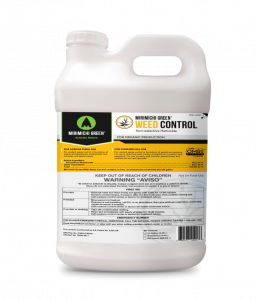
Mirimichi Green Weed Control at a Glance:
- Price – $60 a gallon, $3.75 a cup, $0.47 an ounce
- Availability – everywhere except North & South Dakota, Vermont and Maine (pending approval)
- Results are seen within 15 minutes in hotter temperatures
- Works in cooler temperatures
- Rainfast within 2 hours
- OMRI listed
- Reseed after 24 hours
Where would you use it:
- Gardens
- Greenhouses
- Walkways
- Farmsteads
- Landscaping beds
- https://thenaturalfarmer.org/article/a-short-history-of-glyphosate/
- https://extension.umd.edu/resource/vinegar-alternative-glyphosate
- https://www.newsweek.com/glyphosate-now-most-used-agricultural-chemical-ever-422419
- https://www.epa.gov/ingredients-used-pesticide-products/glyphosate
- https://www.sciencedirect.com/science/article/abs/pii/S1383574218300887
- https://www.iarc.who.int/wp-content/uploads/2018/07/MonographVolume112-1.pdf
- https://agriculture.basf.com/global/en/innovations-for-agriculture/innovation-for-herbicides/glufosinate-ammonium.html
- https://gardeningvibe.com/pet-friendly-weed-killer/
- https://www3.epa.gov/pesticides/chem_search/reg_actions/registration/fs_PC-031802_01-Nov-06.pdf
New Mirimichi Green Packaging
New Mirimichi Green Packaging
INTRODUCING OUR BRAND NEW LOOK
We’re proud to introduce redesigned packaging to help customers better understand, choose, and use Mirimichi Green products.
Products shipping January ‘21 or later will feature this updated branding and labeling. These products contain the same high-performing formulations inside the package and are equivalent to inventory with the prior packaging.
FEATURING
- Updated Product Categories
- Product Line Branding
- Updated Application Rate Tables
EACH MAIN PRODUCT CATEGORY HAS BEEN DIFFERENTIATED BY COLOR
SOIL AMENDMENTS
Soil Amendments are the foundation of Mirimichi Green. You can easily identify these products as featuring our core brand colors of Mirimichi Green and Biochar Black.
BIOSTIMULANTS + FERTILIZERS
Biostimulants + Fertilizers are presented in shades of “Biostimulant Blue”.
NATURAL PESTICIDES
Natural Pesticides are labeled in “Cautionary Yellow”. After all, these products are designed to kill!
NEW, CONSISTENT LABELS
Our labels have been completely re-written for accuracy and consistency.
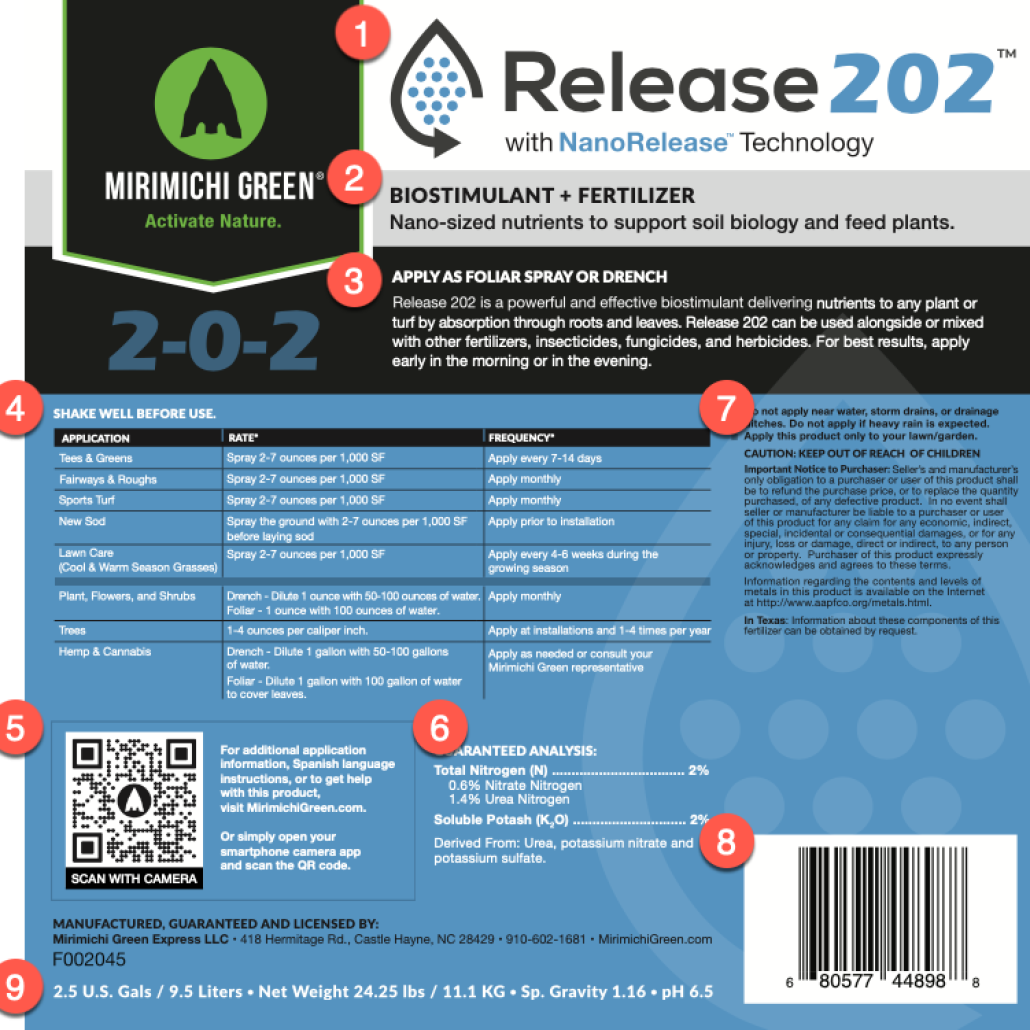
Understanding Mirimichi Green Labels
- Product Logo
- Product short description
- Purpose
- Application Table
(Application, Rate, Frequency) - Call for More Info (QR code)
(Product specific) - Analysis / Ingredients
- Warnings and legal disclaimers
- UPC Code
(Specific to product & package size) - Package Size / Weight / etc.
NEW APPLICATION TABLES
Each product now has a consistent formatted application and rates table. Rates have been adjusted to standardize and simplify product rates across product lines and make them more compatible with industry norms.
If you still have any questions about how best to apply our products, please contact your rep.

PRODUCT BRANDING
Individual product logos were created based on the product category, key product attributes, and how each product relates to others in our catalog.
Product lines with multiple products, like CarbonizPN, Release, and Nutri have consistent logos for each product in the series to help users easily identify and compare.
Each core technology has also been branded and identified on the packaging, so you’ll know the primary mechanisms through which a product works. Look for CarboMatrix, NutriRelease, and ByoSpxtrum on each product.
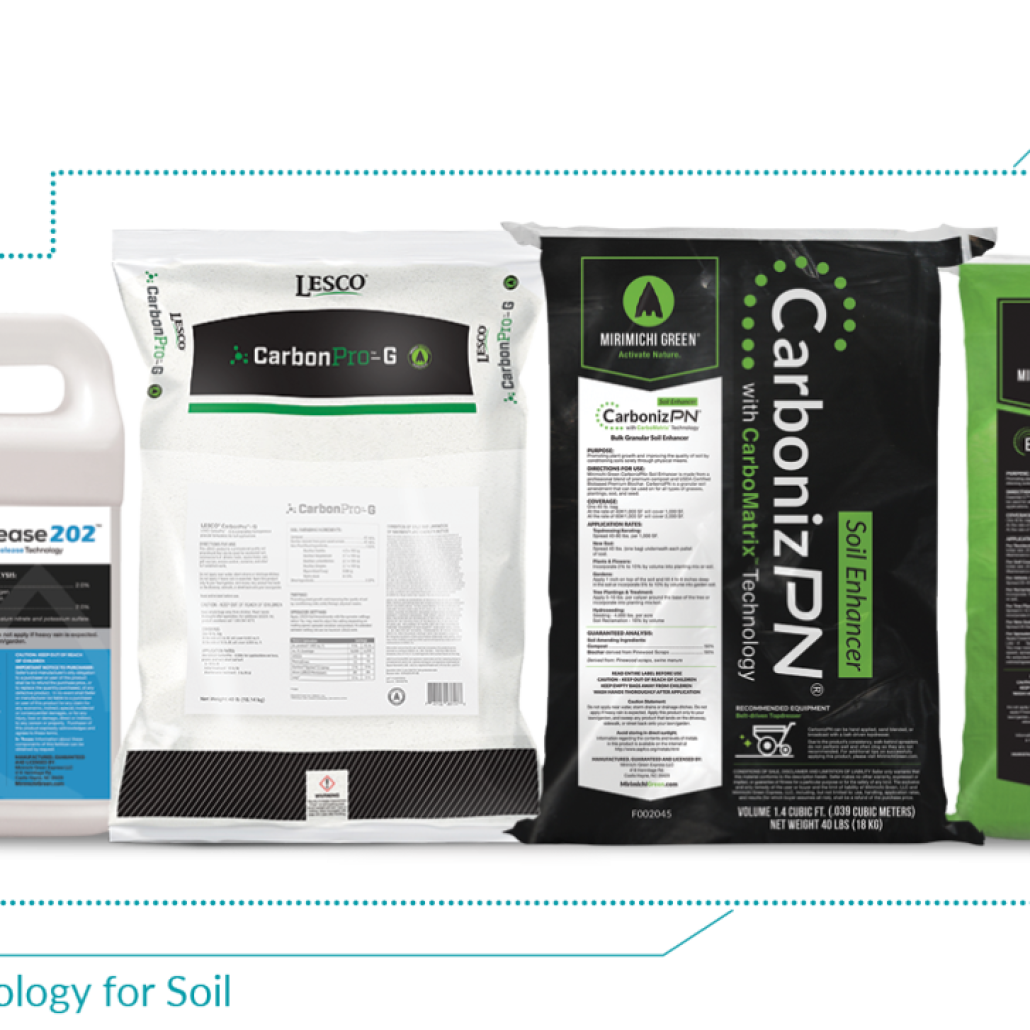
FAQS
No. If you encounter inventory with the former packaging, you can be certain it contains the same high-performing formulation inside the package. We encourage you to use it.
It is safe and reasonable to use either published rate. Both sets of rates are safe and will not harm or burn a plant. The new rates have been established to standardize and simplify our product rates across product lines and make them more compatible with industry norms.
Products with the new packaging will start shipping in January as regular orders are placed. We expect inventory featuring the old labels to persist throughout the supply chain through 2021. Our liquid products have been designed to be shelf-stable for at least 3 years when stored as directed.
Several products had minor name tweaks that will likely go unnoticed. Only two name changes are likely to cause confusion for existing customers.
Release 202 was previously called Nutri-Release 202. The name was changed to better align it with comparable core biostimulants Release Zero and Release 901C.
Nutri-Tree & Shrub was previously called just Tree & Shrub. The name was changed to better align it with comparable targeted biostimulants Nutri-Turf and Nutri-Kelp. Note that this product is suitable for all ornamentals, but we wanted to maintain more name consistency for registration and to reduce confusion for existing customers.
We always appreciate folks taking the time to help us improve. Please email marketing@mirimichigreen.com with any label-related feedback.
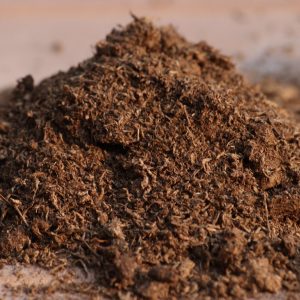
Peat Alternative During Shortage And Beyond
Peat moss availability is an issue not going away any time soon. Luckily, there is a more sustainable, effective, and locally sourced replacement available to amend soils.
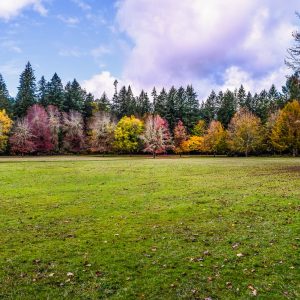
Lawn Winterization: Tips for Healthier, Greener Turf Next Spring
Thanks to Ron Henry at GolfCourseLawn for featuring Essential-G in his latest video on Winterization. Check out his video below.
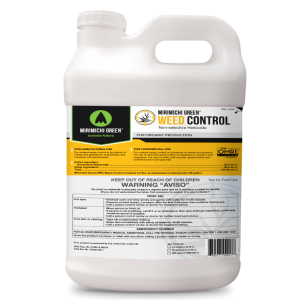
3 Alternatives to Roundup for the Landscape Professional
A look at why people are looking for alternatives and how to identify the right product for your needs.
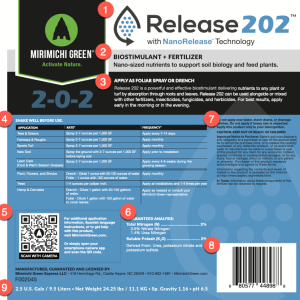
New Mirimichi Green Packaging
INTRODUCING OUR BRAND NEW LOOK We’re proud to introduce redesigned packaging to help customers better understand, choose, and use Mirimichi
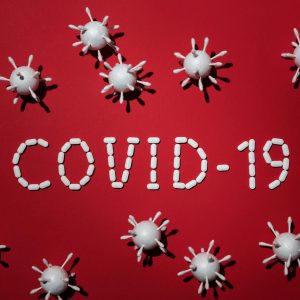
COVID-19 Status
Mirimichi Green production is currently operating at full capacity, while office staff and sales support teams work remotely. Phillip Shumaker

Mirimichi Green Announces Partnership with Sigma AgriScience
North Carolina & Texas – 03/03/2020 – Mirimichi Green, a developer of sustainable bio-based products for the professional landscape industry with

Mirimichi Green Introduces Soluble Microbial Powder Into Product Offering
Mirimichi Green has launched a new soluble microbial powder, ByoSpxtrum, into their product offering that is all-natural and will improve the organic matter in the soil.
